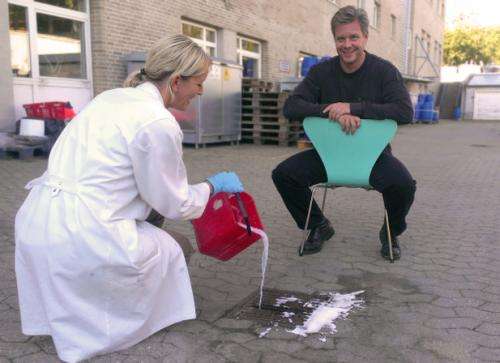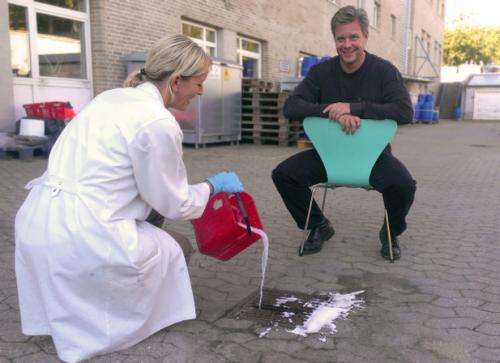Surfactants do not harm the environment

When you take a shower and rinse the soap and shampoo off your body, the foam conveniently disappears between your toes and down the drain. Have you ever thought about what happens to the surfactants afterwards? Whether they seep into the groundwater, lakes and streams, where they could pose a risk to fish and frogs?
Not likely. This is shown in a new and very comprehensive report of the potential impact on the environment of the enormous amounts of common surfactants used day in and day out by consumers all over the world.
"We humans use several million tons of surfactants a year on a global scale. It amounts to billions of kilos, so these are substances that you really don't want to release into the environment unless you're thoroughly familiar with them," says senior researcher Hans Sanderson, Department of Environmental Science, Aarhus University, who is one of the authors of the report.
More Than 250 Studies
For the purpose of promoting the sustainable use of surfactants, the researchers analysed their findings regarding the use, disposal, treatment and risk to the aquatic environment of the most important surfactant ingredients in North America. Although the studies are based in North America, they nevertheless apply on a global scale because they are more or less identical all over the world.
The result is a 100-page virtually encyclopaedic list that sums up more than 250 scientific studies spanning forty to fifty years, at an overall cost of approximately USD 30 million.
"It's the most comprehensive and definitive report to date regarding the environmental properties of detergent substances in soap products – in other words, personal care and cleaning products," says Hans Sanderson.
Soap is Rapidly Degraded

The report shows that when the substances are used correctly and responsibly, and once they have been through a proper treatment plant, the risk to the surrounding environment is very low .
"The substances are made so that they degrade rapidly and thus don't pose a risk to the environment. I can't think of any other substances released into the environment in such large amounts via everyday use by all of us. It's the most commonly used substances of all that go directly into the wastewater, so it's important to keep track of them and ensure that there are no unpleasant surprises in the treatment plants or in the environment," says Hans Sanderson.
How Do Surfactants Work?
Surfactants have a special ability to dissolve fat while at the same time being water soluble. This is because they consist of components that have a hydrophilic head and a hydrophobic tail. The hydrophobic tails repel water but are fond of fat. This means that the tails are the ones that dissolve the fat when we wash ourselves with soap. The surfactant's hydrophilic heads ensure that the fat is carried away in the rinse water.
More information: The article "Environmental safety of the use of major surfactant classes in North America" has been published in the scientific journal Critical Reviews in Environmental Science www.tandfonline.com/doi/full/1 … 10739149.2013.803777
Provided by Aarhus University
















